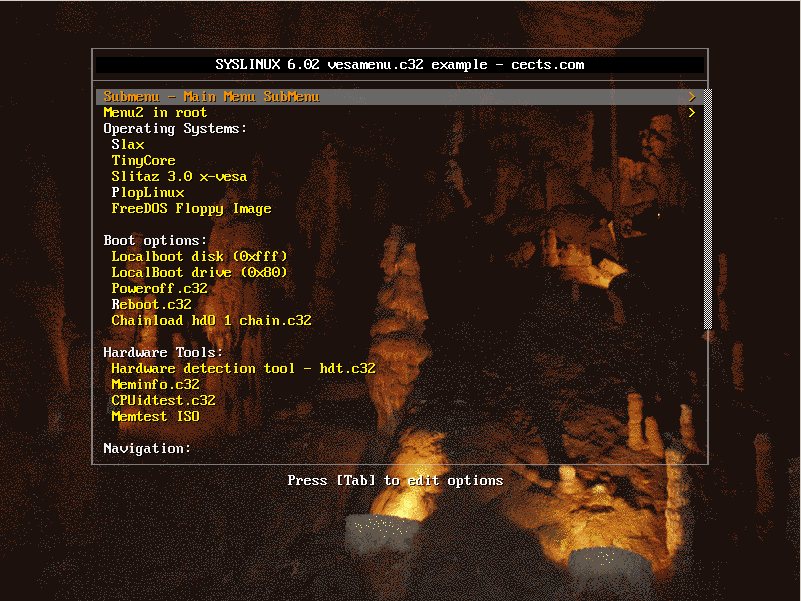
- #Pxelinux boot iso install
- #Pxelinux boot iso full
- #Pxelinux boot iso iso
- #Pxelinux boot iso download
Guide had been modified slightly to include all options in one boot menu with all variations.


#Pxelinux boot iso install
It also includes instructions for both Ubuntu 20.04.1 and 20.10, with automatic install of Ubuntu Server, interactive install of Server, and Live boot of Desktop (like PXE version of "Live CD").
#Pxelinux boot iso full
so here it goes!īelow is a full PXE guide, from setting up server and all required services, up to first boots. Well, I could just as well put in my take on this. Remove the network configuration created by Subiquity: rm /etc/netplan/00-installer-config.yamlĬreate a file /etc/netplan/01-network-manager-all.yaml with the following contents: # Let NetworkManager manage all devices on this system You'll also need to fix the network configuration in the installed system, since Subiquity enables systemd-networkd instead of NetworkManager, which is normally used on desktop systems: If you are installing a desktop system, it's necessary to install the ubuntu-desktop package. You should now be able to boot both UEFI and BIOS clients via PXE into the Subiquity installer, which will then run automated according to your autoinstall config.

Link the PXELINUX config into the boot directories for UEFI and BIOS: ln -s. DEFAULT vesamenu.c32ĪPPEND root=/dev/ram0 ramdisk_size=1500000 ip=dhcp url= autoinstall ds=nocloud-net s=
#Pxelinux boot iso iso
Replace the URLs in angle brackets by the URLs to your web server: Replace by the URL to the ISO image and by the URL to the directory containing the autoinstall configuration (including a trailing slash!). Prepare the PXELINUX files for booting via UEFI as well as via BIOS: # UEFIĬp -p /usr/lib/SYSLINUX.EFI/efi64/syslinux.efi boot/uefiĬp -p /usr/lib/syslinux/modules/efi64/ldlinux.e64 boot/uefiĬp -p /usr/lib/syslinux/modules/efi64/libcom32.c32 boot/uefiĬp -p /usr/lib/syslinux/modules/efi64/libutil.c32 boot/uefiĬp -p /usr/lib/syslinux/modules/efi64/vesamenu.c32 boot/uefiĬp -p /usr/lib/PXELINUX/pxelinux.0 boot/biosĬp -p /usr/lib/syslinux/modules/bios/ldlinux.c32 boot/biosĬp -p /usr/lib/syslinux/modules/bios/libcom32.c32 boot/biosĬp -p /usr/lib/syslinux/modules/bios/libutil.c32 boot/biosĬp -p /usr/lib/syslinux/modules/bios/vesamenu.c32 boot/biosĬonfigure your DHCP server to set the boot filename to boot/uefi/syslinux.efi for UEFI clients and boot/bios/pxelinux.0 for BIOS clientsĬreate a PXELINUX config at pxelinux.cfg/default similar to the following. Mount the image and extract the kernel and initrd: mount -o loop iso_mount/ Go to the directory your TFTP server serves, by default /srv/tftpĬopy the ISO image downloaded in the previous section to the current directoryĬreate some directories that we are going to use in the following steps: mkdir -p iso_mount init boot/uefi boot/bios pxelinux.cfg Preparing and serving the PXE environment
#Pxelinux boot iso download

For future versions, replace all occurrences of 21.04 by the version number you want to install. The following steps are for the current version 21.04 (Hirsute Hippo). Only the server installer Subiquity can be automated, so it's required to use the server image even for a desktop installation. Instead of having a small package specific to the task, it's now necessary to use the regular full ISO image.


 0 kommentar(er)
0 kommentar(er)
